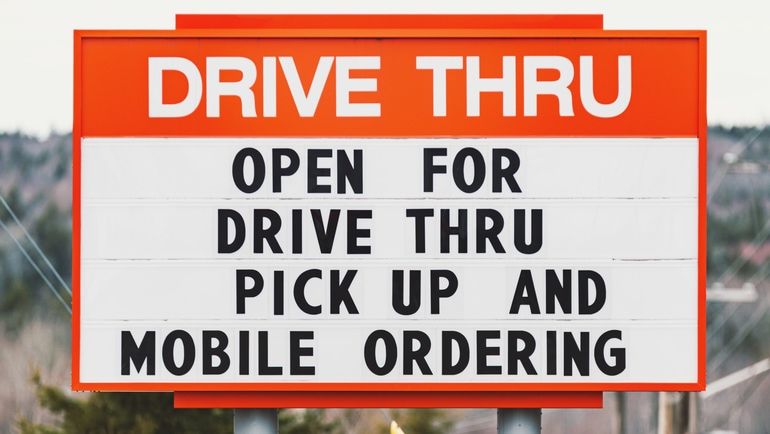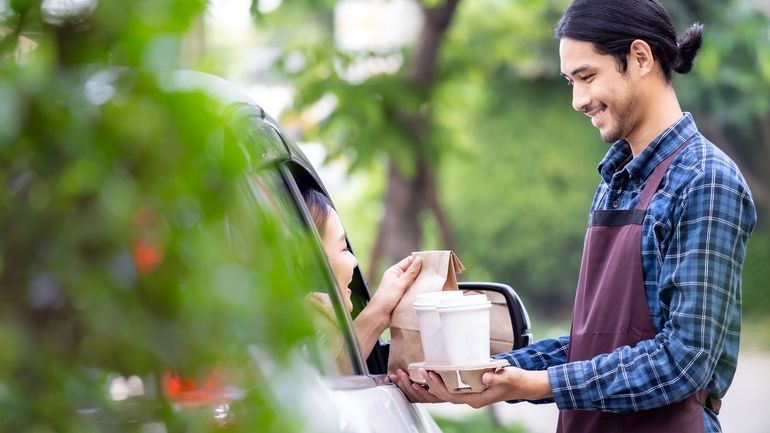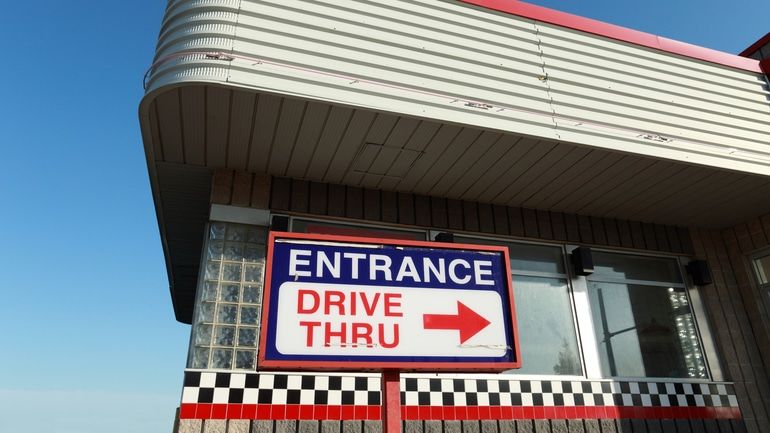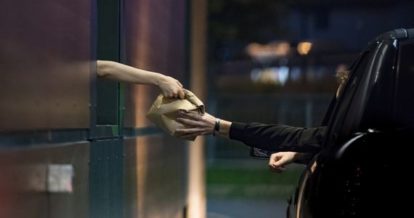COVID-19-related restaurant dining room closures and social distancing have skyrocketed the use of drive-thru ordering systems. According to a report by Bluedot released in late summer 2020, three in four Americans are visiting drive-thrus as often, or more often, than before the pandemic. Compared to a report they released at the start of the pandemic, this figure represents a 43% increase in drive-thru use since April 2020.
While drive-thrus are typically associated with fast-food chains, they’re not the only venues reaping the rewards of this socially-distant, limited-contact pickup phenomenon. Independent restaurants have also begun setting up their own non-traditional drive-thru ordering systems.
If you run a restaurant and are curious about maximizing your pandemic revenue with a drive-thru ordering system, we’re giving you the tools you need to make this possible.
In this guide to restaurant drive-thrus, you’ll learn:
- The benefits of a restaurant drive-thru
- How to set up a drive-thru ordering system at your restaurant
- How to maximize drive-thru orders
Let’s get started.
4 Benefits of a Drive-Thru Ordering System

Fast-food chains have understood the benefits of drive-thrus for a long time. Did you know that California’s cult chain, In-N-Out Burger, pioneered the drive-thru ordering system for restaurants in 1948?
The technology has come a long way, but the benefits of this innovation have only increased amidst the COVID-19 pandemic. Here are four reasons why drive-thrus are beneficial for restaurants.
1) Drive-thrus are convenient for customers
Drive-thrus are all about convenience. Customers can order food, pay for it, and receive it – all without leaving their cars.
This system is also incredibly fast. According to a study by QSR Magazine, customers spend an average of 255 seconds in the drive-thru line. Coming just under 4.5 minutes, this is barely enough time for you to heat a frozen meal or boil a pot of water at home. The convenience of restaurant drive-thrus is a primary selling point for hungry customers who want food almost instantly.
2) Restaurant drive-thrus increase capacity
Drive-thru ordering systems help restaurants serve more people than could fit in their dining rooms at any given time. This factor is incredibly important during the pandemic, while indoor seating is limited or prohibited in many parts of the United States and Canada, and outdoor dining is weather dependent.
During a pandemic, drive-thrus can be the difference between a restaurant that thrives and one that has to shut down.
3) Drive-thrus are an opportunity for a new revenue stream
A drive-thru ordering system provides a new revenue stream for restaurants. And the more options your business has to make money, the more likely it is to thrive. By adding a drive-thru revenue stream to your indoor dining, outdoor dining, and delivery and takeout revenue streams, you’re hedging your bets towards survival.
4) Drive-thru ordering systems are pandemic-friendly
Restaurant drive-thrus are perfectly designed for pandemics. Because drive thru design typically uses a two-way microphone ordering system, they save face-to-face contact for only the payment and pick up part of the transaction. With both staff and customers wearing masks and being able to close windows between necessary interaction points, contact is kept to a minimum with a drive-thru.
To increase the safety of your drive-thru window, you could add plexiglass barriers, like PaPa’s Burgers of Parksville, British Columbia did.
How to Set Up a Drive-Thru Ordering System at Your Restaurant (Even If You Don’t Have a Drive-Up Window)

So, you want to get in on the drive-thru action? There’s no time like the present.
Here’s the good news: you don’t have to stick to a traditional drive-thru window model to take advantage of this revenue stream.
By following these steps, you can build a custom drive-thru ordering system for your restaurant.
1. Determine how customers will place orders
The first thing you have to do is figure out how customers will place orders. Here are some options:
- Customers place orders on-premise using a traditional two-way microphone drive-thru ordering system – an option that isn’t just for quick service restaurants. For instance, Miami’s El Atlakat is a full service restaurant that is housed in a former Wendy’s. The restaurant took advantage of their built-in drive-thru window to create a seamless drive-thru ordering process.
- Customers place orders online or over the phone before coming through a drive-thru lane to pick up the order.
- Customers arrive on-premise and place orders by scanning a QR code with their smartphone.
- Customers order form staff members with POS tablets, much like Chick-fil-A did to speed up drive-thru wait times. Just remember to equip staff with the necessary personal protective equipment (PPE).
Choose the drive-thru ordering method you can afford to implement, one that a) gets customers in and out of the queue quickly, and b) is pandemic-safe.
2. Figure out where customers will receive their orders
After deciding how your customers will place their orders, you need to determine how these same customers will receive their food based on what your space allows:
- Dedicated pickup window: If your restaurant has traditional drive-thru ordering system capabilities, there’s no need to reinvent the wheel. Just ensure that staff who hand off food are wearing proper PPE, such as face masks.
- Food lockers: This contactless, self-service option involves placing a food locker outside of the restaurant for customers to access easily, much like an Amazon Locker. Burger King, for example, is introducing a system that sends customers a code to use to open the locker that contains their food.
- Curbside delivery: If you don’t have space for a traditional drive-thru window or locker, you can have masked staff members bring customers their food. Like Red Robin, you can designate curbside parking spots at the front of your restaurant and place a sign out front with a phone number for customers to call when they arrive.
All of these options are practical methods for drive-thru order pickup.
3. Make a plan for collecting payments
Perhaps most importantly, you need to consider how customers will pay for their food.
In a traditional drive-thru ordering system, customers pay for their food through the pickup window after placing their order and before receiving their food. Payment usually involves a handoff of cash or card between the customer and a staff member. While this method is simple, it’s not the safest option during COVID-19, and may not work if you don’t have a traditional drive-thru window. You can make it safer by limiting cash transactions and offering contactless payment options instead.
Another option is to have customers pay online. They can do this by placing the entire order through an online ordering system or placing an order on-premise by scanning a QR code to complete the transaction. These kinds of online payments reduce contact, which is critical during the pandemic.
4. Decide how to direct traffic
Creating a drive-thru ordering system for your restaurant could disrupt traffic flow around your restaurant. Before the pandemic, some cities across the United States banned the construction of drive-thru windows in an effort to reduce carbon emissions and improve public health. Check local laws beforehand to make sure that you’re allowed to build a drive-thru.
If you can construct one, you should paint arrows on the ground or put up signage to direct traffic. If you have multiple drive-thru lanes, you can differentiate them for on-premise ordering and online ordering pickup like Shake Shack did.
If curbside pickup is all you’re allowed to do, designate priority parking spots in the front of your lot. When a car pulls up, a staff member can greet them and ask them for the name on their order, or the customer can call the phone number on the parking sign and share that information with the staff member.
5. Prepare the kitchen for drive-thru orders
Drive-thru operations are similar to takeout operations. Make sure your drive-thru and online ordering platforms integrate with your POS so that the kitchen automatically gets tickets for all drive-thru orders.
Prepare takeout packaging at the start of each day by placing plasticware, sauce packets, napkins, and other amenities in bags. Speed is critical for drive-thru orders, so do what you can in advance.
4 Ways to Maximize Drive-Thru Orders

Whether your restaurant has a traditional drive-thru ordering system or a makeshift one, here’s how you can optimize your drive-thru orders to keep guests coming back:
1) Invest in proper signage
Installing a drive-thru ordering system requires lots of signage to avoid confusion, traffic jams, and accidents. If you need permits to create a drive-thru, you may also need to get stop signs, no-turn signs, and one-way signs from your local government to ensure a smooth flow of traffic around your restaurant. Paint arrows and words on the ground to further indicate traffic flow.
Your menu is another type of sign you have to optimize for drive-thru service. Display your menu in a way that customers can easily read from their cars: either in the form of a digital menu they can access from a QR code or a physical menu board. Georgia’s Williamson Bros. Bar-B-Q opted to print massive versions of their menus, cover them in vinyl, and post them to the side of their restaurant for easy ordering.
If you’re doing curbside pickup, purchase additional signs so customers know where to park and what number to call to get their food.
2) Create a drive-thru menu
Create a simplified drive-thru menu to ensure your customers can be in and out of the queue in five minutes or less. If your drive-thru wait time takes longer than five minutes, set expectations from the start so that customers don’t get angry.
With such a short turnaround time, your restaurant needs to be able to spend the majority of those five minutes assembling and serving dishes, rather than cooking them.
For your simplified menu, focus on several dishes that you can make continuously in large batches. Things like curries, large-batch noodle dishes, casseroles, soups, and stews work well.
For made-to-order dishes like sandwiches, salads, and burgers, place staff in an assembly line formation to speed up the process. Rearrange your kitchen to facilitate this service method and focus on prepping enough mise en place at the start of the day to last you as long as possible.
3) Spread the word about your restaurant drive-thru
Promote your drive-thru ordering system on social media, your restaurant’s website, and via its email newsletter.
On your website, create a pop up that announces your new drive-thru ordering system. You could even offer customers a discount on their first drive-thru order.
4) Use tech to your advantage
Technology is the key to a smooth drive-thru ordering system.
If you’re using a traditional drive-thru system, opt for a POS system with a customer-facing display option to confirm orders. This technology can reduce costly mistakes that occur when it’s difficult for customers to hear staff through a two-way microphone system.
If you’re doing a less traditional drive-thru ordering system, you can equip several staff members with POS tablets and have them walk through the drive-thru line to expedite order placement. Just don’t forget to provide them with proper PPE!
Finally, look for an online ordering system or a dedicated mobile app to simplify the ordering and payment process. Look for a system that lets customers create accounts to save orders and save payment information for fast checkout and convenience.
The bottom line: A drive-thru ordering system can help your restaurant adapt to COVID-19
A drive-thru ordering system can help your restaurant thrive during the COVID-19 pandemic because it allows you to increase your capacity for orders in a way that reduces face-to-face contact. And fortunately, you don’t have to have a traditional drive-thru window set up to take orders on-the-go. Get creative with food lockers, curbside pickup, and online ordering. When you optimize your menu for fast preparation and deliver quality service with the help of technology, you’ll keep customers coming back again and again.
Learn how you can use TouchBistro’s online ordering software and tableside ordering hardware to create a makeshift drive-thru ordering system for your restaurant.
Sign up for our free weekly TouchBistro Newsletter







